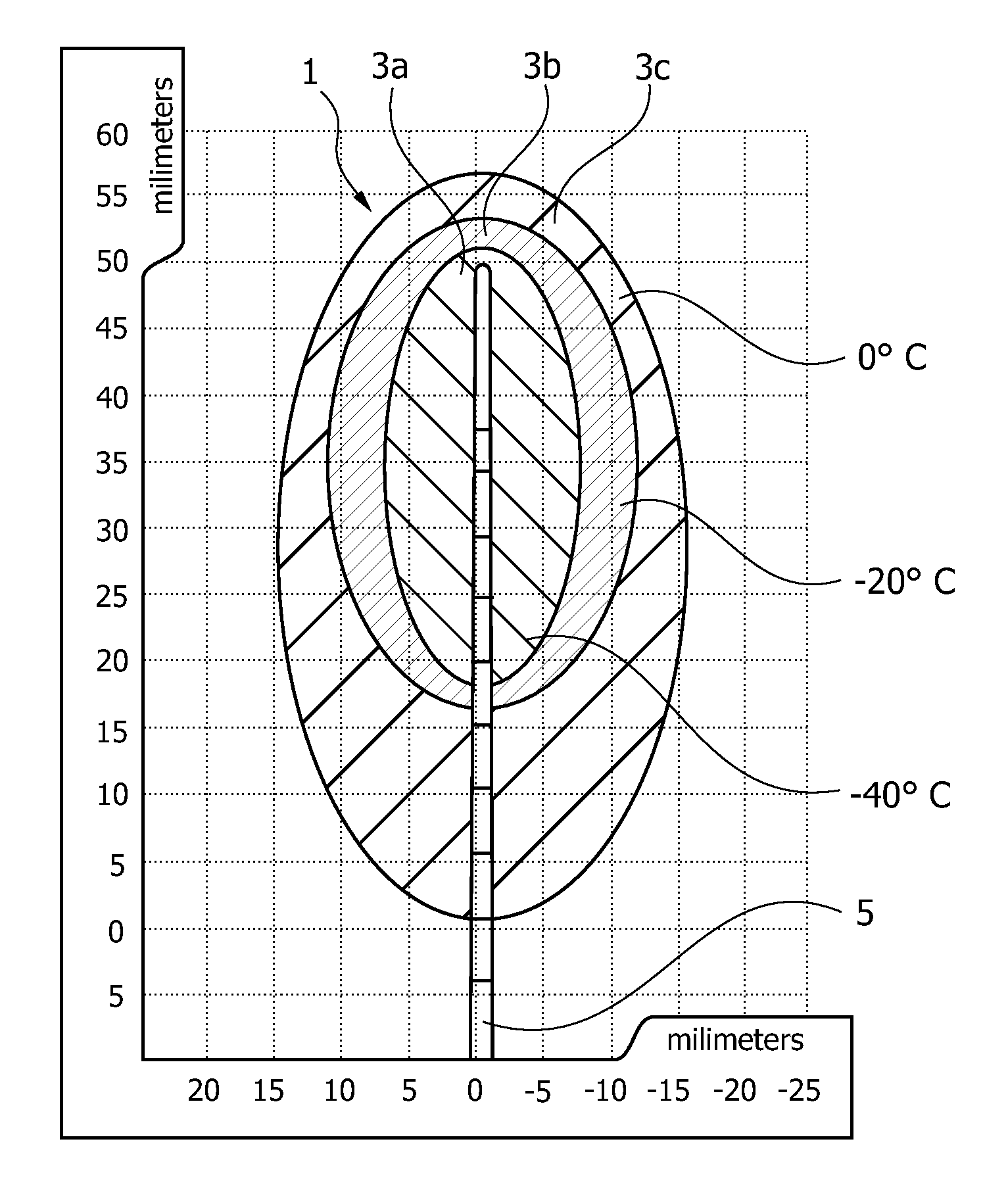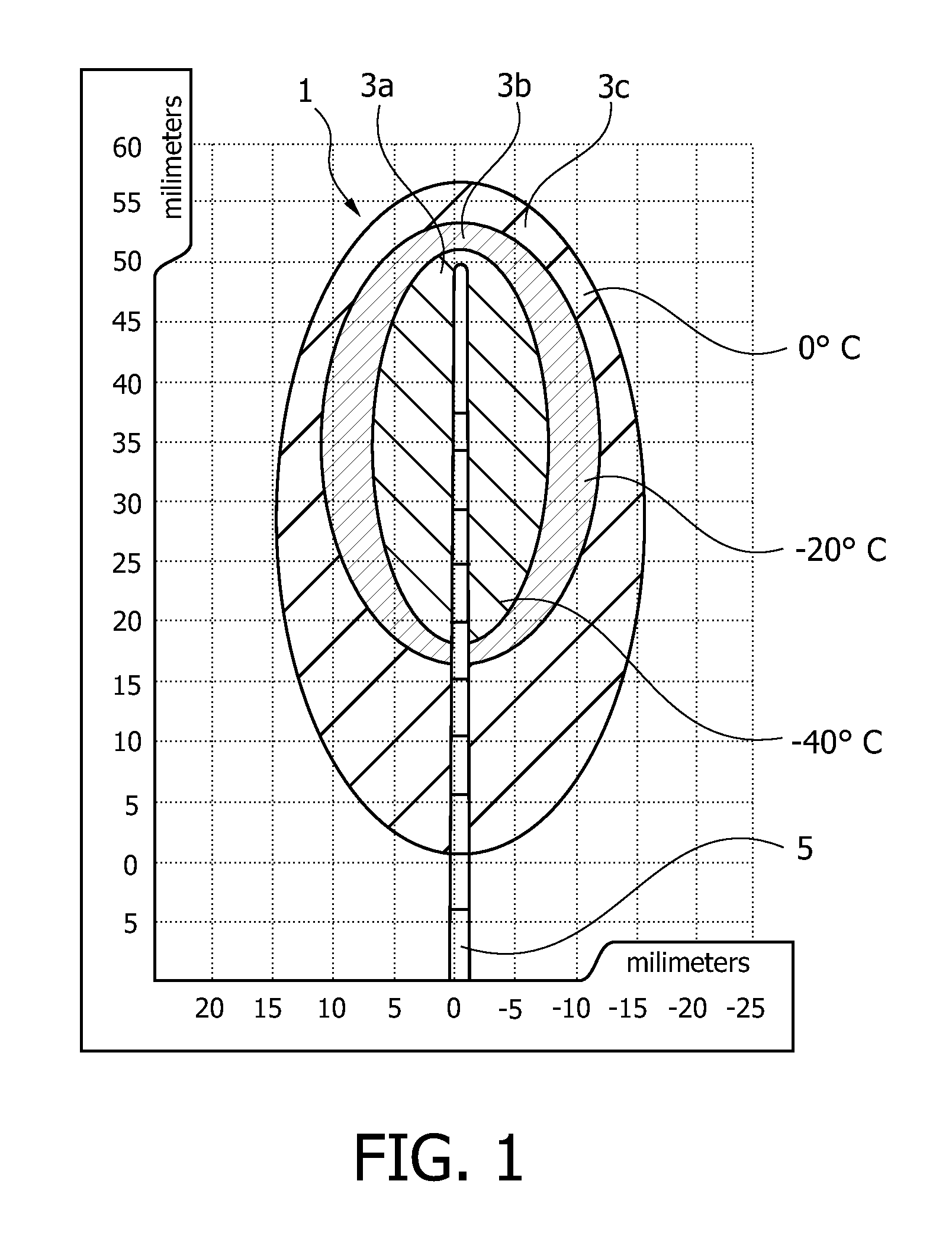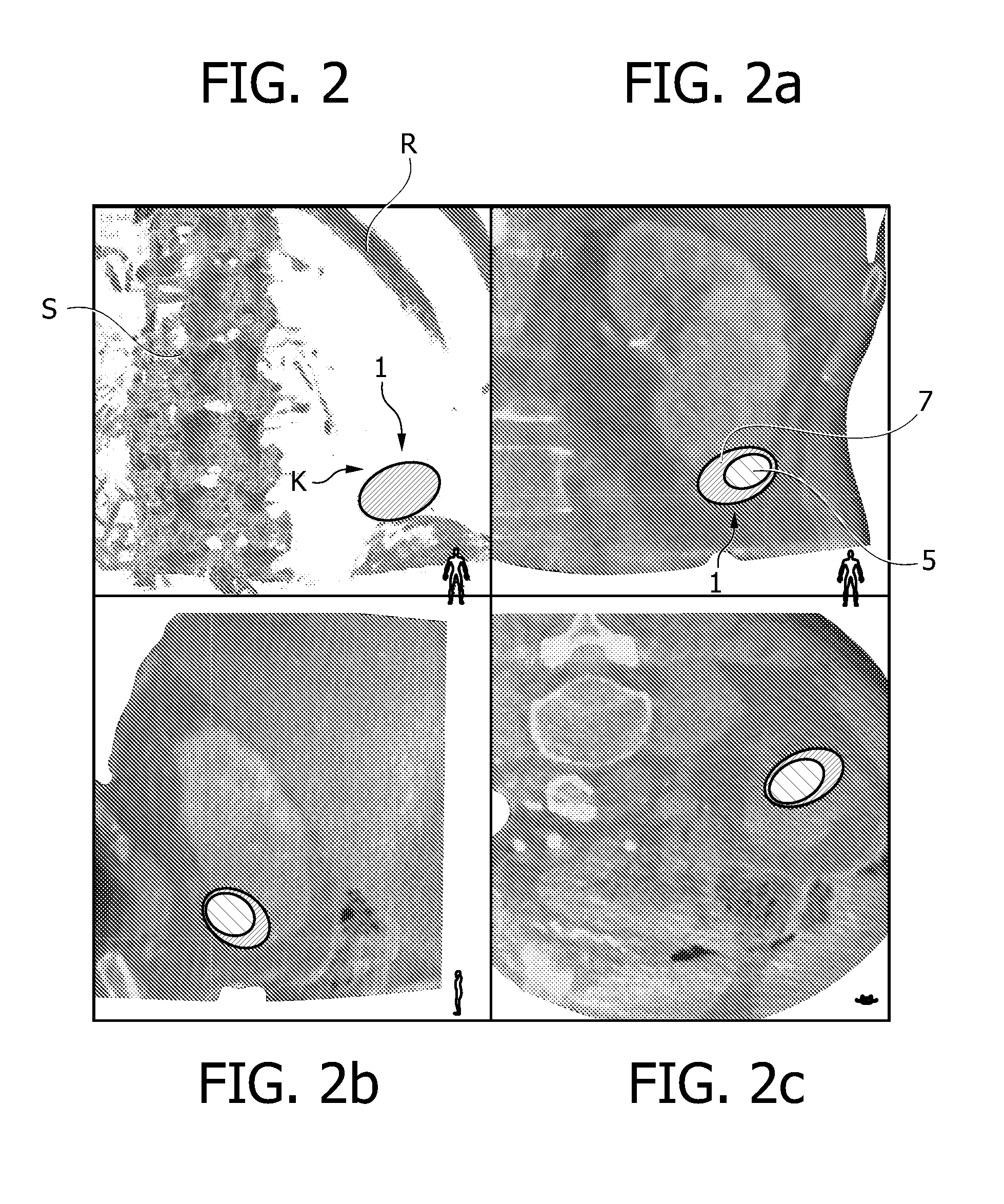Ablation treatment planning and device
a technology of treatment planning and device, applied in the field of ablation treatment planning and ablation treatment planning, can solve the problems of cell death, difficult to precisely control the effect of ablation volume, and inability to accurately and reliably assis
- Summary
- Abstract
- Description
- Claims
- Application Information
AI Technical Summary
Benefits of technology
Problems solved by technology
Method used
Image
Examples
Embodiment Construction
[0035]An ablation treatment planning method according to an embodiment of the present invention will be described with respect to FIGS. 2, 2a, 2b, 2c and 6.
[0036]In FIG. 2, a volume rendered image is shown. Such image may be based on a 3D image data set acquired with an X-ray imaging device from a region of interest. For example, an ablation treatment planning system 100 may comprise such X-ray imaging device such as e.g. a C-arm system as shown in FIG. 6 which is adapted to acquire a plurality of X-ray projection images under various image acquisition angles such that, finally, a 3D image data set may be generated from the plurality of 2D projection images. Therein, an X-ray source 101 attached to a first end of a C-arm 109 may emit X-rays which are transmitted through a region of interest 103 within a patient (not shown) lying on a displaceable table 105. The X-rays are then detected with an X-ray detector 107 attached to a second end of the C-arm 109. Therein, the C-arm may be mo...
PUM
 Login to View More
Login to View More Abstract
Description
Claims
Application Information
 Login to View More
Login to View More - R&D
- Intellectual Property
- Life Sciences
- Materials
- Tech Scout
- Unparalleled Data Quality
- Higher Quality Content
- 60% Fewer Hallucinations
Browse by: Latest US Patents, China's latest patents, Technical Efficacy Thesaurus, Application Domain, Technology Topic, Popular Technical Reports.
© 2025 PatSnap. All rights reserved.Legal|Privacy policy|Modern Slavery Act Transparency Statement|Sitemap|About US| Contact US: help@patsnap.com



